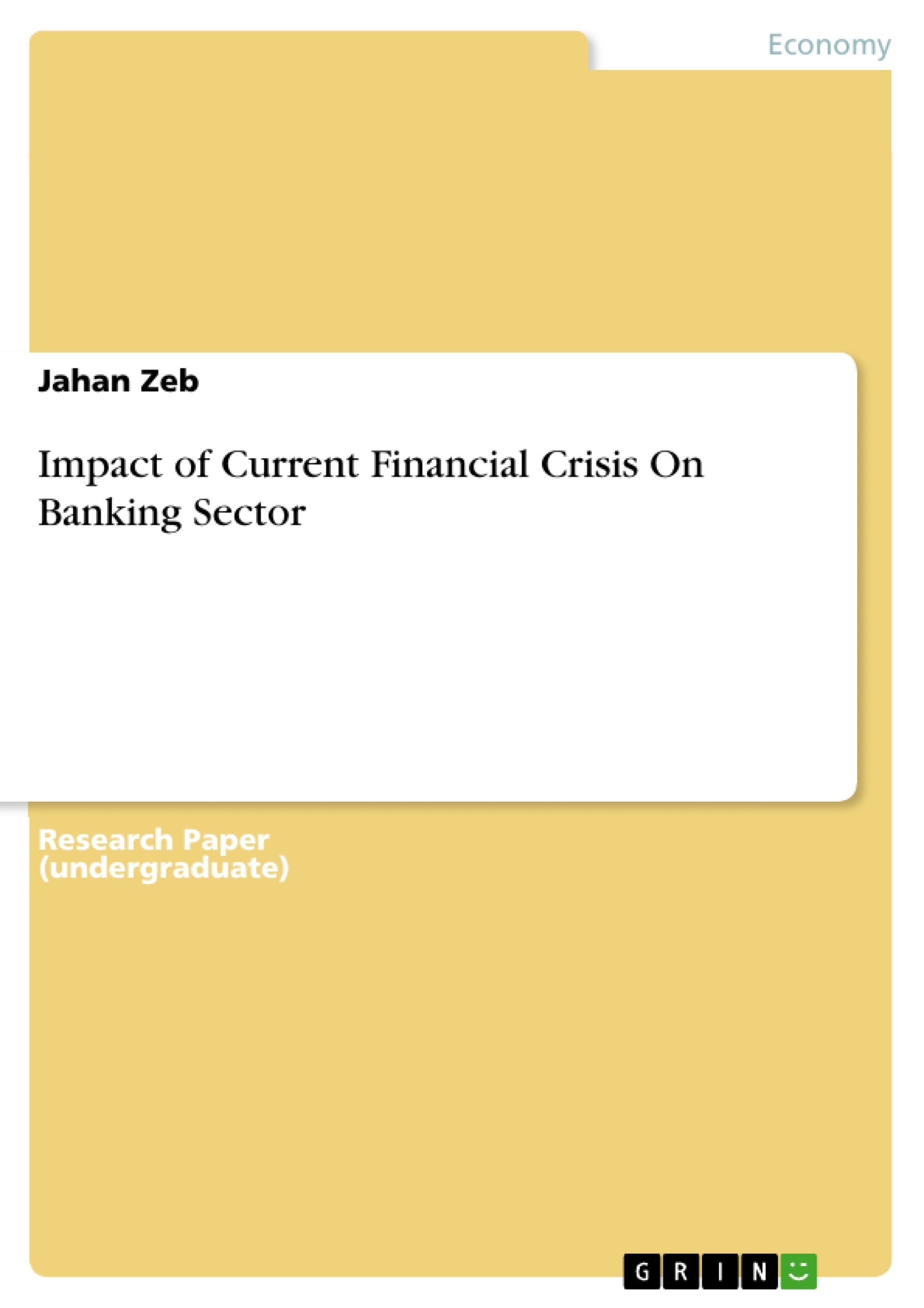Banks are thought to be central to business activity. But the banking sector faces some time severe crisis due to decline in credit and growth. The after effects of banking crisis are very
dangerous. Therefore, when they experience financial distress or financial crisis, governments usually come to the rescue, offering emergency liquidity in the form of bailout programs.
Inhaltsverzeichnis (Table of Contents)
- Introduction
- Background of the Current Financial Crisis on Banking Sector
- Impact of the Current Financial Crisis on Banking Sector
- U.S.
- UK
- Europe
- Asia
- Impact of Banking Crisis on Industries
- Financial Stability after Financial Crisis
- Role of Central Banks in stability of Banking Sector
- Approaches to stabilize the Banking Sector
- Approaches to stabilize the Banking Sector with Bail out Packages
- Importance of Risk Management
- Future of Banking Sector
Zielsetzung und Themenschwerpunkte (Objectives and Key Themes)
This research paper aims to provide a comprehensive overview of the current banking crisis and its effects on the global banking and other sectors. It explores the roles of central banks and governments in stabilizing the banking sector, examines new rules and regulations proposed to prevent future crises, and analyzes the future outlook of the banking sector.
- Impact of the current financial crisis on the banking sector in various regions (U.S., UK, Europe, Asia)
- Role of central banks and governments in stabilizing the banking sector
- Importance of risk management in financial institutions
- Future of the banking sector in the light of different proposals and suggestions
- Impact of the banking crisis on different industries
Zusammenfassung der Kapitel (Chapter Summaries)
The first chapter introduces the current financial crisis, its background, and its impact on the banking sector in various regions of the world. It discusses the vulnerabilities of the banking sector to various forms of risk, including liquidity risk, credit risk, and interest rate risk. The chapter also examines the impact of the crisis on different industries.
The second chapter focuses on financial stability after the financial crisis. It explores the role of central banks in stabilizing the banking sector and examines different approaches used, including bailout packages. The chapter also emphasizes the importance of risk management in financial institutions.
Schlüsselwörter (Keywords)
The key terms and concepts explored in this paper include financial crisis, banking sector, central banks, government intervention, bailout packages, risk management, liquidity risk, credit risk, interest rate risk, and the future of the banking sector.
- Citar trabajo
- Jahan Zeb (Autor), 2009, Impact of Current Financial Crisis On Banking Sector, Múnich, GRIN Verlag, https://www.grin.com/document/142224



